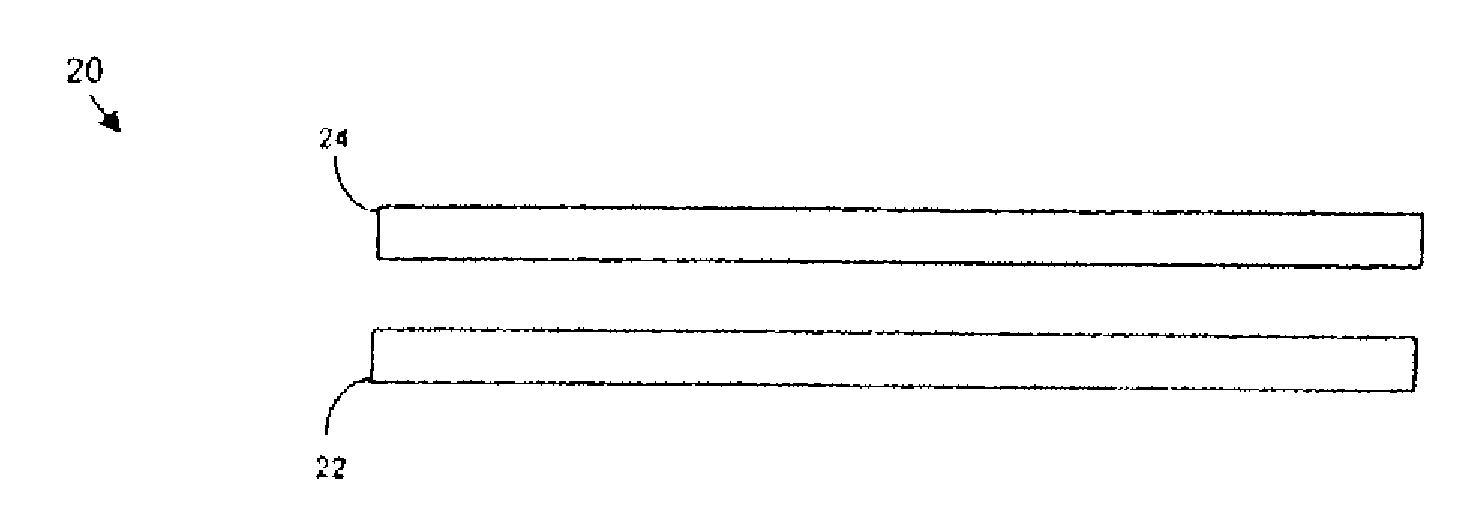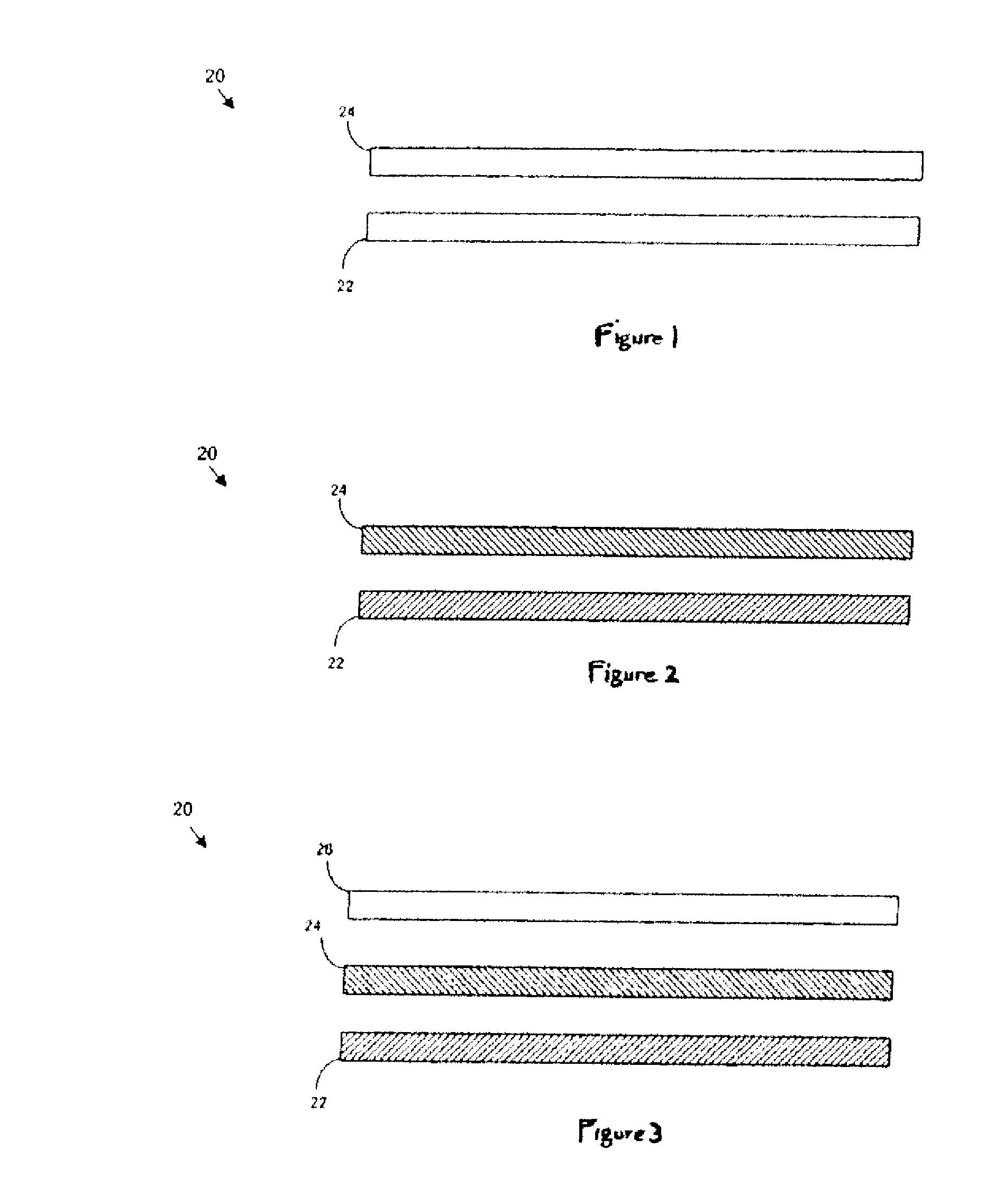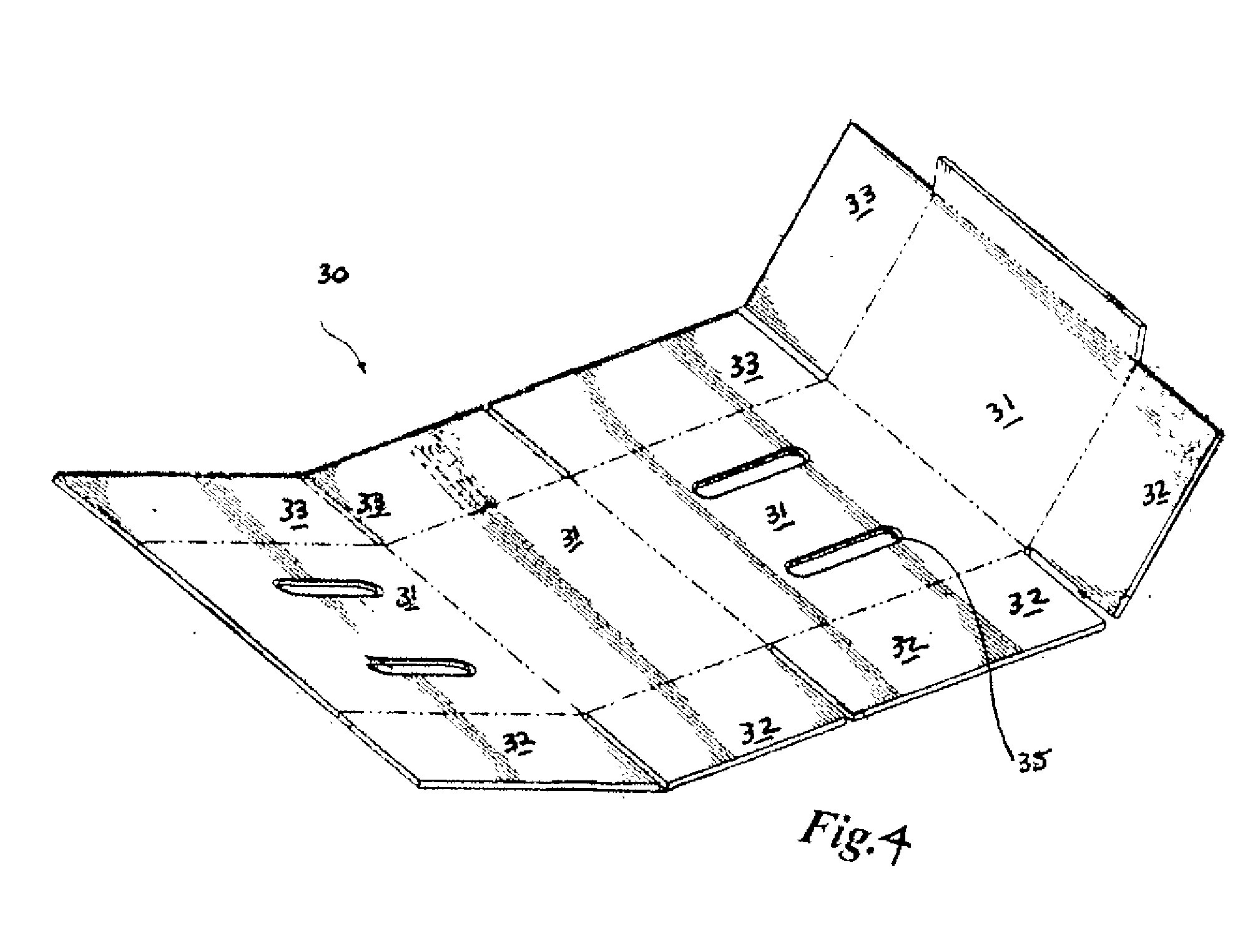Moisture resistant container
a container and moisture-resistant technology, applied in packaging paper, transportation and packaging, other domestic articles, etc., can solve the problems of loss of strength, wax-saturated containers cannot be effectively recycled, and add a significant amount of weight to the container blank,
- Summary
- Abstract
- Description
- Claims
- Application Information
AI Technical Summary
Benefits of technology
Problems solved by technology
Method used
Image
Examples
example 1
[0033]One aspect of an embodiment of the process is outlined on FIG. 6. Untreated pulp furnish to be sheeted is split into two portions. The portion to be pretreated will comprise about 5-40%, preferably 10-30%, of the total furnish. The balance of the furnish is handled conventionally. A cationic crosslinking wet strength resin is then added to the portion diverted to be pretreated in an amount of about 0.5-5.0%. The exact amount used will depend somewhat on the particular percentage of the total fiber being pretreated. In general it should be sufficient to comprise about 0.1-0.6% of the total furnish weight. After a hold time of at least about 30 seconds, preferably about 5 minutes or greater, the pretreated portion is then recombined with the untreated portion of the furnish and thoroughly mixed. From this point the recombined furnish is handled conventionally in all respects.
[0034]Four cationic papermaking chemicals were chosen for comparison using the conventional method in whi...
example 2
[0037]The previous conventional treatment with PAE resins described in Example 1 was compared with that of the present invention. Sheets were prepared from once dried western softwood kraft fiber without any treatment, with 100% being treated, and with 10% being pretreated with PAE resin then recombined with the 90% untreated fiber. Resin usage was 2.5% by weight on the fiber pretreated, resulting in 0.25% total usage on the recombined fiber.
TABLE 2Effect of Pretreatment on Short Span Compressive strengthand Screening RejectsShort Span CompressionFiberTreatment(1)Strength, kN / mScreening Rejects,1No resin treatment4.08 ± 0.19(2)All fiber treated(3)5.06 ± 0.4422.910% pretreated(4)4.82 ± 0.212.8(1)Once dried fiber sheeted from fresh water, 161 g / m2 sheet weight(2)90% Confidence limits(3)0.25% PAE resin used on treated fiber(4)0.25% PAE resin used based on total recombined fiber
[0038]It is evident that a significant improvement in dry strength was obtained on the two samples treated wit...
example 3
[0039]The amount of the fiber to be pretreated with the cationic wet strength resin can vary widely. Specific amounts will be determined in part by the particular environment in the mill in which the process is carried out. From about 5% to 40% gives generally satisfactory results. However, there is a broad optimum from the standpoint of minimizing screen rejects on repulping in the range of about 10% to 30% of the fiber pretreated. Again, the fiber was once dried western softwood kraft intended for ultimate use as linerboard. This is shown graphically in FIG. 7 for treatment levels of 0.25%, 0.30%, and 0.40%, based on total recombined furnish. A cationic PAE wet strength resin was used in all cases. For the two higher levels of use a marked minimum amount of repulping rejects is noted at a pretreatment level of about 20%. The effect does not appear as dramatic for the lower level of PAE use
[0040]While the present inventors do not wish to be bound to any particular reason for this b...
PUM
| Property | Measurement | Unit |
|---|---|---|
| diameter | aaaaa | aaaaa |
| radius | aaaaa | aaaaa |
| angle | aaaaa | aaaaa |
Abstract
Description
Claims
Application Information
 Login to View More
Login to View More - R&D
- Intellectual Property
- Life Sciences
- Materials
- Tech Scout
- Unparalleled Data Quality
- Higher Quality Content
- 60% Fewer Hallucinations
Browse by: Latest US Patents, China's latest patents, Technical Efficacy Thesaurus, Application Domain, Technology Topic, Popular Technical Reports.
© 2025 PatSnap. All rights reserved.Legal|Privacy policy|Modern Slavery Act Transparency Statement|Sitemap|About US| Contact US: help@patsnap.com



